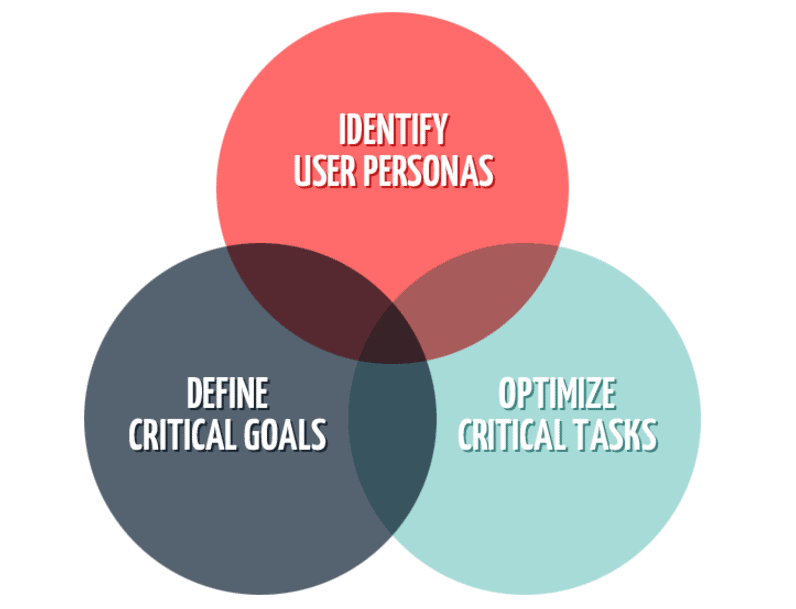
Web Design: Usability over Trends
April 13, 2016
UX & Usability: Aim for Conversions
May 4, 2016
There is a new way of boosting your business, and we think you need to know about it.
Growth hacking. It has been used by the smartest for centuries, before even it had a name. Today, it’s not an additional effort you make once in a while, but a necessity and the golden key for your business.
- What is growth hacking?
- Why is everyone talking about it?
- And why is everyone saying you need to be doing it too?
You are absolutely right asking these questions, and you definitely deserve to know the answers, but let us take this process step by step.
What is growth hacking?
To understand what growth hacking is, you should first understand how online giants like Facebook and Twitter achieved so much growth in so little time. Yes, you’re guessing it right, they simply engaged in growth hacking.
Facebook gained 200 million users in only 12 months, while Twitter added 60,000 users in one day. Both of them reached these numbers by paying close attention to the hints their visitors were giving them and using those hints to improve user experience and make their websites attractive for their audience.
The term “growth hacking” was coined in 2011, and you will hardly find a single definition for this phrase. Growth hacking is everything that will make your business grow using minimal resources.
A growth hacker is a part of your marketing team, but is not a marketer. Their main goal is to drive your business forward, but they’re not a business developer. Confusing, right? We know. Here’s an easier way of understanding growth hacking.
1. Growth Hacker is ONLY Interested in Growth
Traditional marketers are usually excellently trained to see the broad picture, create and implement winner strategies for it. And this is always an absolute must-do!
A growth hacker, who mainly operates online, identifes the unique chance and seizes the moment to achieve growth. That moment might not seem important in the big picture at the given time. It might not even be included in your marketing and business plans, but a growth hacker’s job is to find shortcuts to your goals by not following your plan.
If your plan is to attract new visitors by Google advertising and convert them into leads on your website, a growth hacker might find a way to drive traffic to your website without any advertising at all. And that is the only task they have—growth.
A good example of growth hacking dates back to 1950s. Have you noticed how often have you visit McDonald’s while driving the interstate roads? Seeing the immense flow of traffic on those roads, McDonald’s seized the chance in 1950s, popping out around the most popular exits. Now, imagine this in the online sphere. Your growth hacker will identify the hot spots or the needs of your audience, and help your business satisfy those needs.
2. Growth Hacking is a Part of Your Marketing
A growth hacker might not abide by the marketing rules or follow every step of your plan, but they must be in tune with your strategy. They must be aware of the company goals, objectives, challenges, buyer personas, and other marketing data. Open the “gates of data” for your growth hacker and watch them use the numbers in your favor.
Having said this, a growth hacker must never substitute your marketing strategy, which is more consistent and is aimed at long-term success.
3.Growth Hacking is Your Hollywood
Surprised? Don’t be; growth hacking really does operate like Hollywood. Every year around 500 movies are released in Hollywood, but how many make the Oscars? Very few, right? But once they do, they go worldwide and can change cultures.
Growth hacking is a similar process, it consists of endless experiments, hypothesis, A/B testings, etc. Your growth hacker might request 500 fixes on your website and sales strategy, 490 of them might not work right away, but 10 of them might turn you into an authority overnight.
Understand that your competitors are already engaging in growth hacking, which means they will be competing in seizing the same moments as you. Understand that identifying the exact moments and areas that need improvement take time and data, and …. yes, it’s not really an exact science, but you can make it more or less accurate by generating accurate data through marketing automation.
4. Growth Hacking is Fast & Furious
When your growth hacker asks you to add a button on the homepage to multiply the number of subscribers, you should do it today, not tomorrow, not in a week, not in a month. Some activities might be time-sensitive. For an instance, if a specific product can win you a million new customers the day before the Valentine’s Day, it should be on your homepage as soon as possible.
In the meantime, make sure your business is ready for maximum results. Can you produce a million chocolate boxes in a month? If not, better not publish that 90% off coupon.
These processes are easy to regulate by having an extensive marketing and sales history, well-trained experts, production capabilities, and other resources your business needs to supply the product to your consumer.
5. Growth Hacking is Important for B2B, Too
If you operate in a B2B sector, then you are probably very dependant on a certain community. Believe it or not, there are just as many opportunities of growth hacking here than in B2C sphere.
The ugly truth is that due to the limits of the community, those perfect chances are probably getting a lot of attention from your competitor companies as well. In this case, time matters the most. First come, first served.
Most growth hackers will support your business development activities. In fact, a growth hacker might recognize opportunities in places where your business development team never even looks!
6.Growth Hacking is Cost Effective
Growth hacking is meant to help you find and use easy, low-cost, and extremely efficient channels that everyone else fails to see at the moment. You can drive millions of visitors to your website by posting millions of ads on top-ranking websites, keeping several SEO teams, and more, but that would never be growth hacking because you might be spending a lot more than what you get.
A very inspiring growth hacking success story belongs to AirBNB, who understood a very easy and cheap way of driving interested traffic to their website.
For those who are not familiar with the brand, AirBNB is a website that allows you to turn your bedroom into a hotel and charge your guests for the stay. So, if you are trying to growth hack for that website, where would you look first? Where can you find the ultimate source of visitors who are looking for a room or a house to rent? Craigslist! It’s so easy and obvious, yet not many marketers could see it at the time.
AirBNB offered every poster to add a feature to post on Craigslist as well. With the permission of the user to spread their announcement, AirBNB managed to use its service as a way to attract the interested audience to its website.
We bet it didn’t cost AirBNB millions, but it did make the brand into a million-dollar product.
Growth Hacking & Inbound Marketing:
You will most likely receive maximal results by investing in inbound marketing and growth hacking. Implementing a marketing strategy without keeping a watch on possible growth channels means falling back on competition, while growth hacking without a proper marketing strategy can distract you from your goals and be a waste of time and resources.
A single marketing expert that is in charge of distributing official press releases might not see the subtle industry developments and how traffic works online to seize the moment. The optimal method of combining these two directions in one is trusting it to a team that has a long standing in the marketing industry and is caught up with the latest developments.
There is always space to grow, it all starts with the first step.










